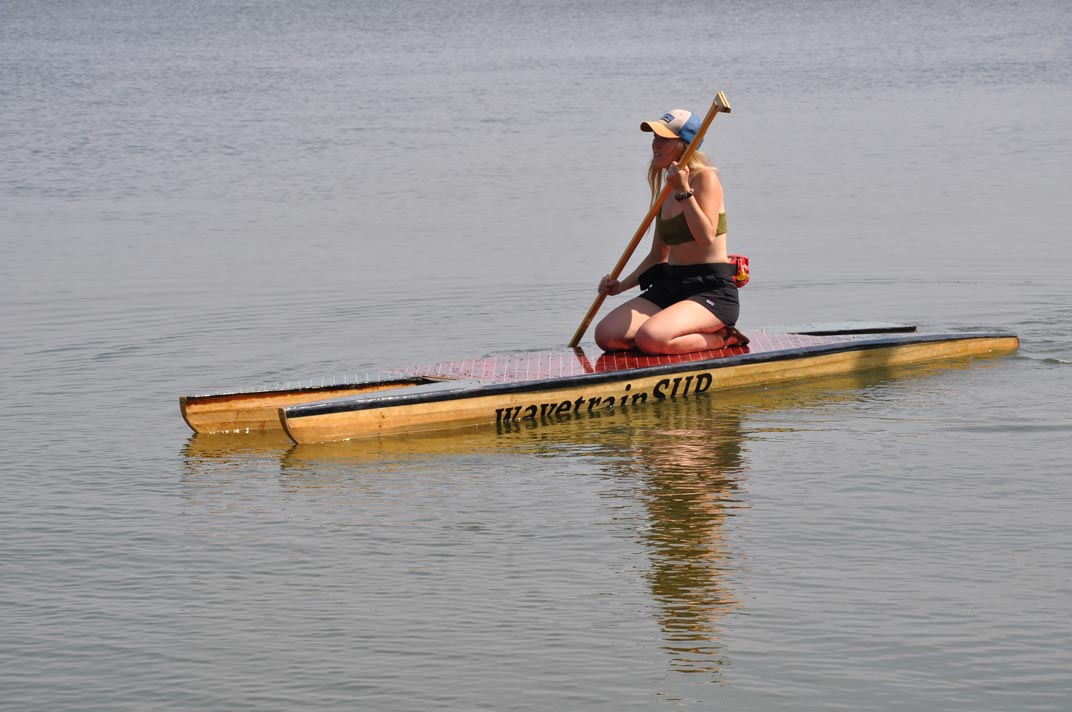



#4 - Just about any wood will work for boat building. The strips used in building the pontoons are cut from select lumber and stored in a form where they get time to ‘breathe’ after they are cut. The wood strips give the pontoons their shape and appearance, but it is the waterproof, strength-giving external fiberglass skin that delivers the strong, waterproof surface for the pontoons. White pine, sourced from northern Wisconsin, is a favorite, but western red cedar is a fine wood as well. The pontoons are edge-glued strips, 3/16ths thick, which has proven to be the perfect complement to the strength that the fiberglass and epoxy add. Standard pontoons are one wood, one color, but there are options such as adding pinstripe strips, or varying the width of the strips. If pinstripes are added, they are typically a contrasting color, whether the color is in the wood (e.g. walnut) or dyed. Keep in mind that a rice paper-based ‘decal’ is an option for the side of the pontoon. After all, each boat has to have a name, right?
Internal bulkheads spaced at regular intervals, create the shape of the pontoon. Each strip is glued to each bulkhead, as well as the strips above and below, for a stiff and strong first connection that is ultimately covered by the fiberglass and epoxy. The internal pontoon and bulkhead surfaces are covered in fiberglass (usually two ounce) to add further strength and waterproofing or brushed with epoxy for water proofing. Small holes are drilled along the top of each bulkhead to allow for air flow and equal pressure throughout the pontoon.
Each supCAT is built atop a strongback, which is basically a long, narrow workbench dedicated to the supCAT. As one might imagine, building a 14 foot + long object on a six foot bench has its frustrating moments. An equally long strongback solves that problem, especially if you make it tall enough to stand while you work....